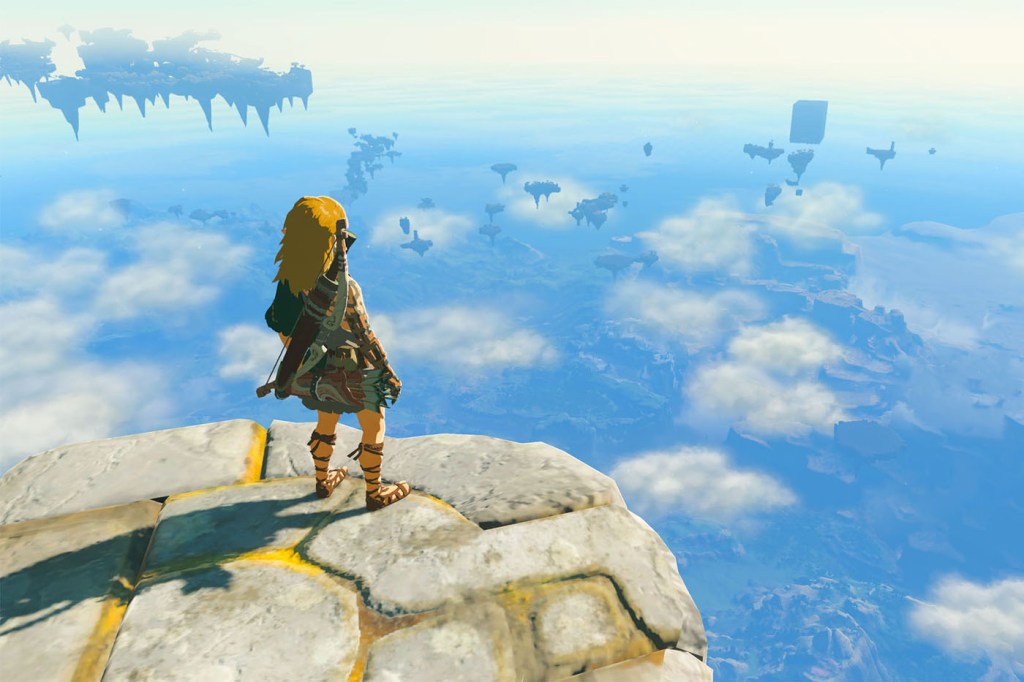The Legend of Zelda: Tears of the Kingdom is one of the most anticipated games in years. Almost 40 years in, why is Nintendo’s hit game series still so popular?

For anyone even remotely interested in video games, May 12, 2023, will be akin to a national holiday. After years of hype and anticipation, Nintendo will release “The Legend of Zelda: Tears of the Kingdom,” the latest entry in its iconic series.
Since the original “Legend of Zelda” released in 1986, the story of the brave, sword-wielding hero Link, magical princess Zelda and evil demon king Ganon has captivated the world. Generations of people have been raised on these games, to the point where even if you don’t play video games, you probably have some familiarity with Link and his green hat and tunic.
Throughout its history, the core adventure of each Zelda game has remained largely the same. The player inhabits the role of Link, a point-eared, silent hero, as he and Zelda fight to save the kingdom of Hyrule from the evil Ganon. But Nintendo’s willingness to change everything else around that idea, such as the design, mechanics and art style, has helped keep the series fresh.
From the darker tone and transformation mechanics of “Majora’s Mask,” the 2000 sequel to “Ocarina of Time,” to the cartoon, cel-shaded art style and oceanic adventures of “Wind Waker” Zelda has been able to weather the decades with style and substance.
“In that way, being a Zelda fan is sort of like being a Beatles fan,” Sichling says. “I may like it all, but I have my favorite here or there.”
Part of Zelda’s secret sauce is the philosophy and every Nintendo game, is a focus on play and what it means to give players the tools to make their own fun. That design philosophy makes Zelda a series that everyone can enjoy, regardless of their gaming experience.
Chris Barney (he/him), an associate professor of game design at Northeastern, says Nintendo’s approach to evolution––only make changes when it benefits the game––has helped Zelda set trends, not chase them.
“The way that Nintendo innovates with Zelda is as little as possible, and I say that in a good way,” Barney says. “They only make changes, they only alter the paradigm, when the game demands it or when what they’re trying to do demands it.”
Barney has been playing Zelda games since the original “Legend of Zelda” and its iconic golden game cartridge hit the Nintendo Entertainment System in the U.S. in 1987. Since then, he says the series has changed the game industry on three separate occasions.
Although it’s taken for granted in modern games, the original Zelda made the action-adventure genre into a mainstream idea and the idea of saving game progress into an industry standard.
“Ocarina of Time” was a milestone in 3D world-building in games. Most recently, “Breath of the Wild” reinvented open world games by giving players expertly-designed interlocking systems and a level of freedom and flexibility that are rare in the genre.
“‘Ocarina of Time’ wasn’t the first 3D game, and the [original] Zelda wasn’t the first action adventure game,” Barney says. “But they did it in a way where they got all the important parts right––very, very right––for the first time.”
All of these design choices are integral to the series’ lasting appeal, but without a hero like Link there is no “Legend of Zelda.”
“The Zelda team really seems to understand that what makes a character is how that character solves problems,” Sichling adds. “Link has always been brave first and clever second, and that’s fun to play around with.”
A hero of few (read: no) words but one who is willing to leap into action at a moment’s notice, Link has inspired generations of players, like Zarow, to dress up in a green tunic and run around their yards swinging a stick at imaginary enemies.
“He’s a really good protagonist because he is meant to be projected onto, but he is not the boring blank slate guy with the stubble who is everyone and no one,” Zarow says. “He is for someone, but he is for you in a really special way.”
The series’ approach to storytelling has also distinguished it from its peers, which have increasingly committed to long-running stories with interconnected sequels. With rare exceptions, each Zelda game tells a new story with the same characters without any continuity from the last game, almost as if they are not just heroes and villains but symbols that persist. It makes the games more accessible without sacrificing a certain level of depth. Although the plot of Zelda games are simple, Zarow says fans have found plenty of meaning in their mythopoetic storytelling.
“Link and Zelda are a fated pair doomed to reincarnate forever and never fully be at peace and happy because in their next life it’s starting all over again,” Zarow says. “That’s a beautiful way to have a game series that has the same characters and stories. It becomes this really tragic, beautiful thing that has so much to read into and pull from.”
The reasons fans fall in love with the Zelda series are as varied as the games themselves. But the love for Nintendo’s characters, gameplay and world––and the adventure that awaits in it––unites the “beautiful, massive community” that has built itself around these games, Zarow says.
“There’s something about the adventure that calls to people,” Zarow says. “Even if you had one Zelda game as a kid and you didn’t even beat it, there’s still something about that story that you can relate to and makes people love it.”
Cody Mello-Klein is a Northeastern Global News reporter. Email him at c.mello-klein@northeastern.edu. Follow him on Twitter @Proelectioneer.






